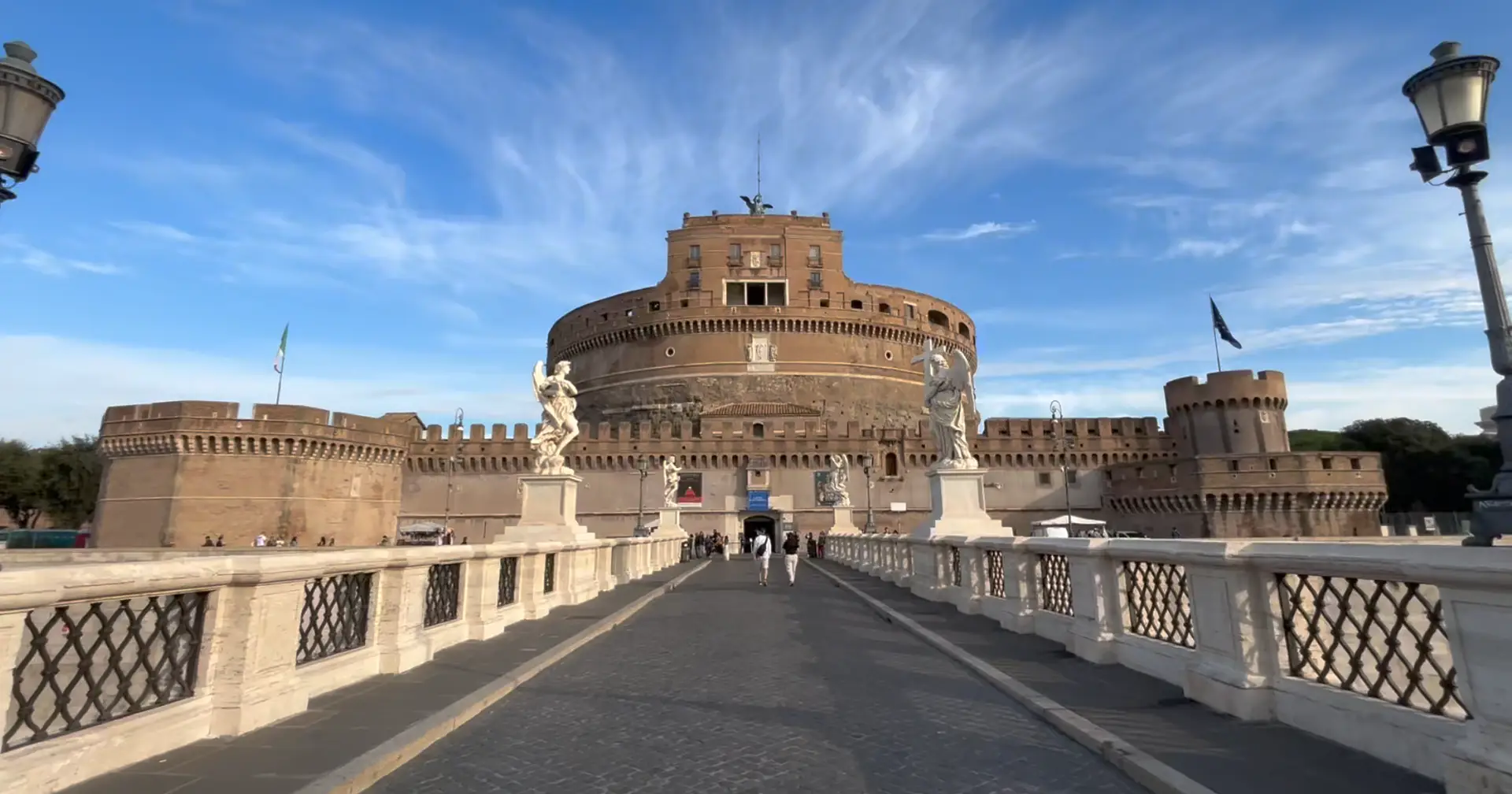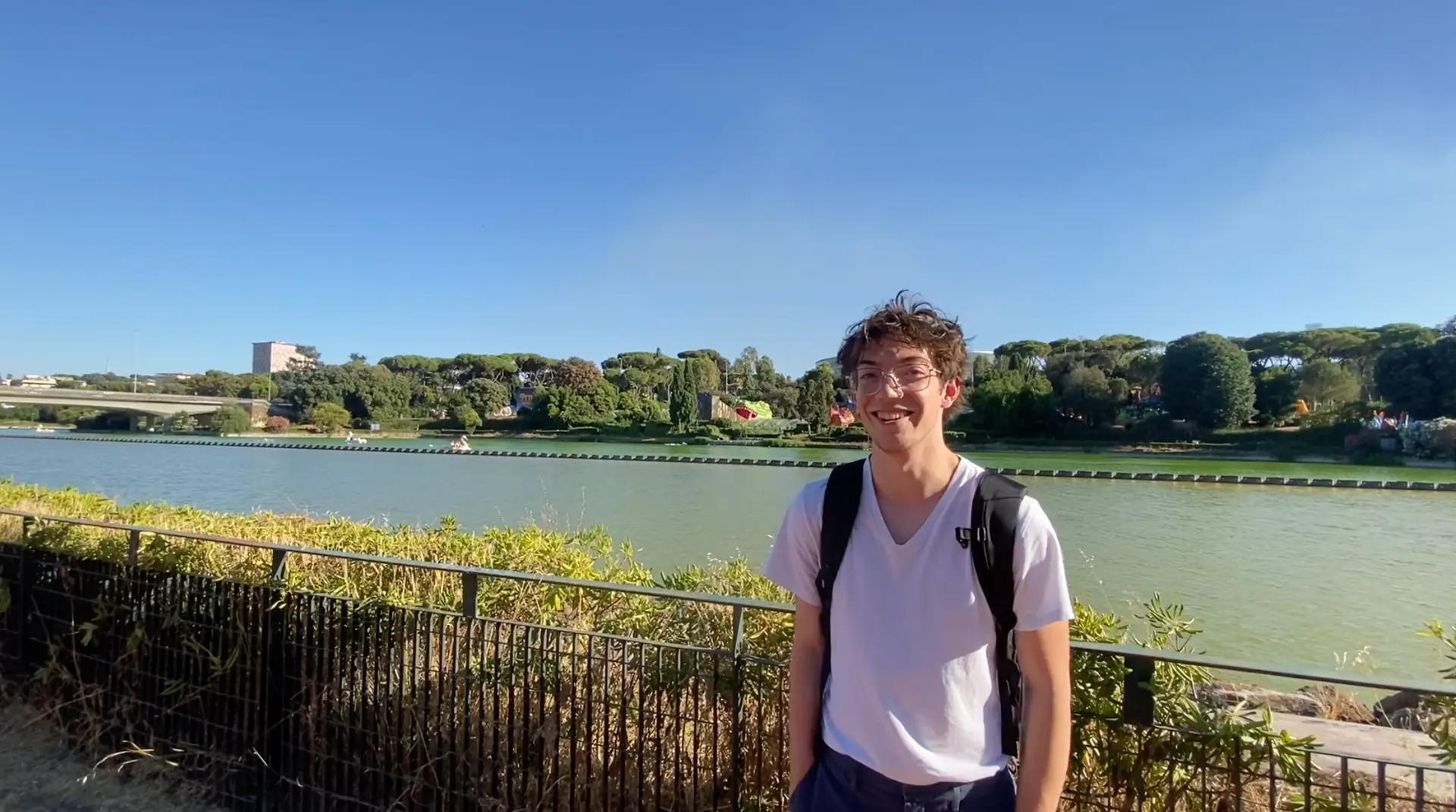Towards the end of the Spring 2025 Semester we spoke to Jeremy Lynn and Isaac Merwin about their experience studying abroad in Rome at the Pantheon Institute. Talking to both of them while onsite at the Vittoriano monument in Piazza Venezia, Jeremy and Isaac have a lot to say about the layered history of Rome’s built environment, what drew them to study architecture in the first place, and what they intend to pursue in the professional architectural field (watch the full interview on YouTube below).
Isaac, a 3rd-year Architectural Studies major at Connecticut College, started out as a Math major but quickly discovered a love for architectural design, intrigued by the complexity of city planning. Studying in Rome this Spring at the Pantheon Institute, Isaac has discovered the layered entanglement of Rome’s two-thousand-year history of designing, building, repurposing, rebuilding, and adaptation of urban development. From the Vittoriano terrace, you can see the spectrum of amalgamation of structures, from the ancient Colosseo and Roman Forum, to St. Peter’s Basilica and Vatican City, all the way out to modern-day EUR and Mussolini’s Colosseo Quadrato (Square Colosseum). “Whether your a fan of the modern, Renaissance, or ancient architecture, there is something here for everyone. And even if you don’t like architecture, it’s a beautiful environment to study anything!”
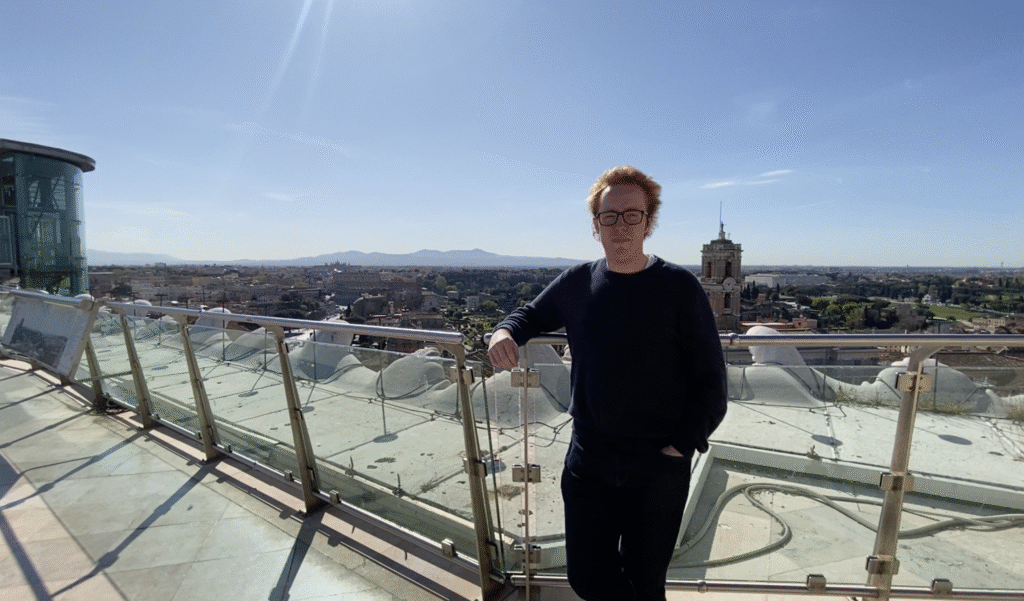
Above: Isaac on the Vittoriano rooftop terrace.
Below: a view of the Colosseo and Palatine Hill from the Vittoriano rooftop terrace.
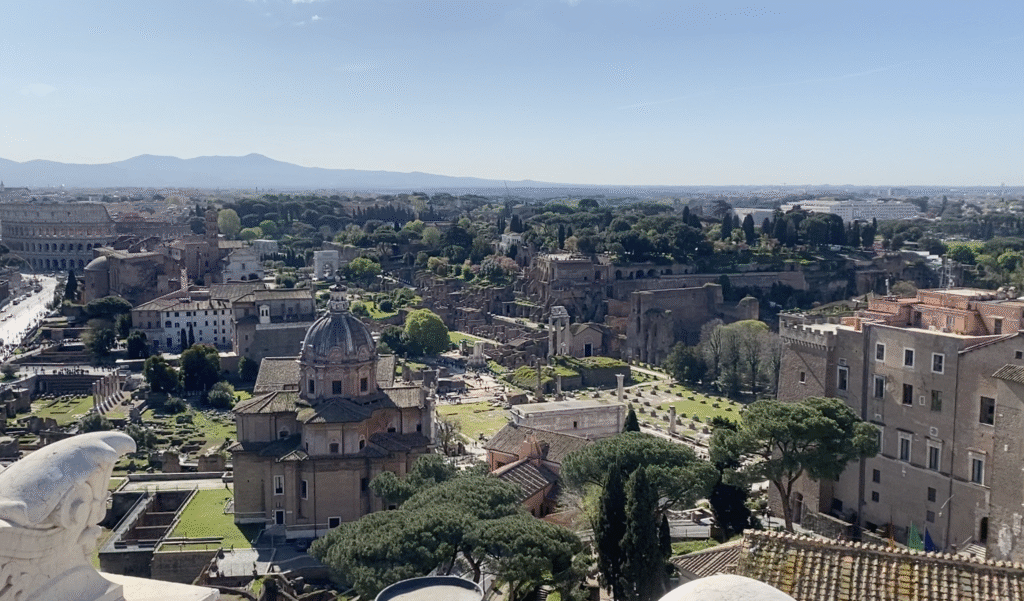
“I would like to try and do a blend of urban planning and architecture, maybe a bit of both. Maybe I’m going to do nothing and everything at the same time. I like to keep myself on my toes and I like to have a nice, broad information core and that’s something that Rome really helps with.” Isaac Merwin

Above: Jeremy in Cartography class on a cartographic walk looking at an 11th century inscription describing a 1244 flooding of Rome’s Tiber River.
Below: a cartographic walk through Piazza Navona
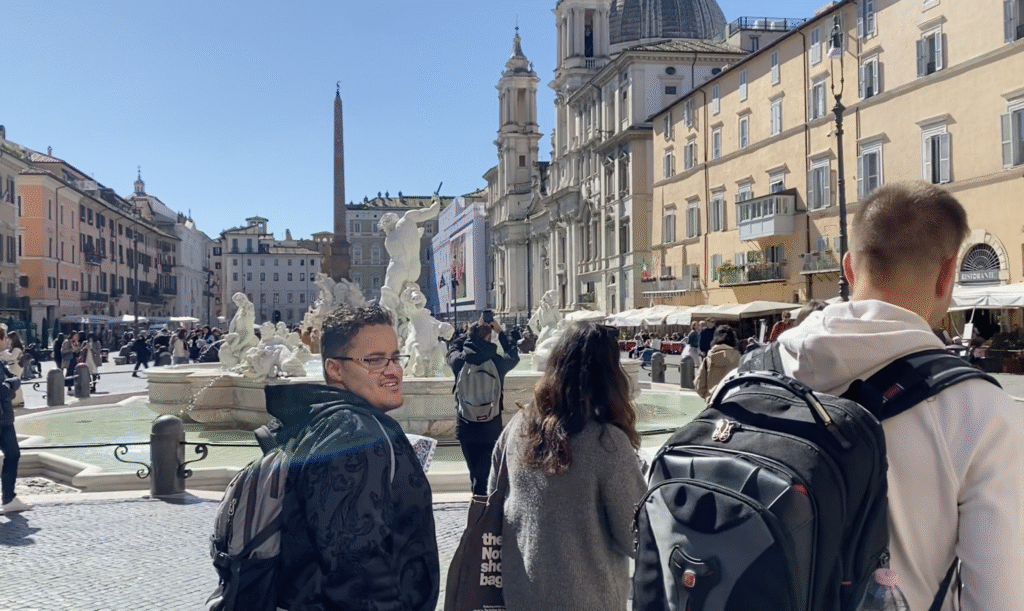
Jeremy, a 4th-year Architecture Major at Penn State University, is focused on community development and how people navigate through spaces. “Rome has a lot of public parks and piazzas. The history of Rome is really great to study. It’s been a really great experience seeing how people work and play around ancient ruins.” Professionally, Jeremy is looking to pursue creating opportunities, whether through affordable housing, greater access to education, or creating additional public spaces, to make cities more inclusive.
For Jeremy, Rome provided the added benefit of architectural history. “I love architectural history, it’s my minor, and I wanted to be in a city that has a lot of rich history to it. … Rome is unlike any other city I’ve ever seen. It’s a mix of ancient ruins and really quirky contemporary buildings.”
“I think my favorite part that surprised me about coming to Rome, and even broader Italy, was just how different every single little small town is around Italy. … You have places like Florence and Venice which look absolutely nothing like Rome and then you have the South where you have Paestum and Pompeii. … I think it’s just really fun to see all these different kinds of architecture and really expose myself to different building typologies.” Jeremy Lynn
Pantheon Institute is invested in experiential learning, and as such, incorporates hands-on and immersive learning whenever possible. Whether on cartographic walks around Rome with the Cartography course, sketching in Renaissance palazzos for Analysis class, touring Italy on the Academic Field Trips, or exploring archeological sites throughout Lazio led Pantheon Institute professors, our students are encouraged to engage with the local environment in a tactile and intimate way, thus making their time in Rome a deeply transformative experience, personally and academically. Rome, and all of Italy, become the classroom, bringing theory and concepts to life with every step.
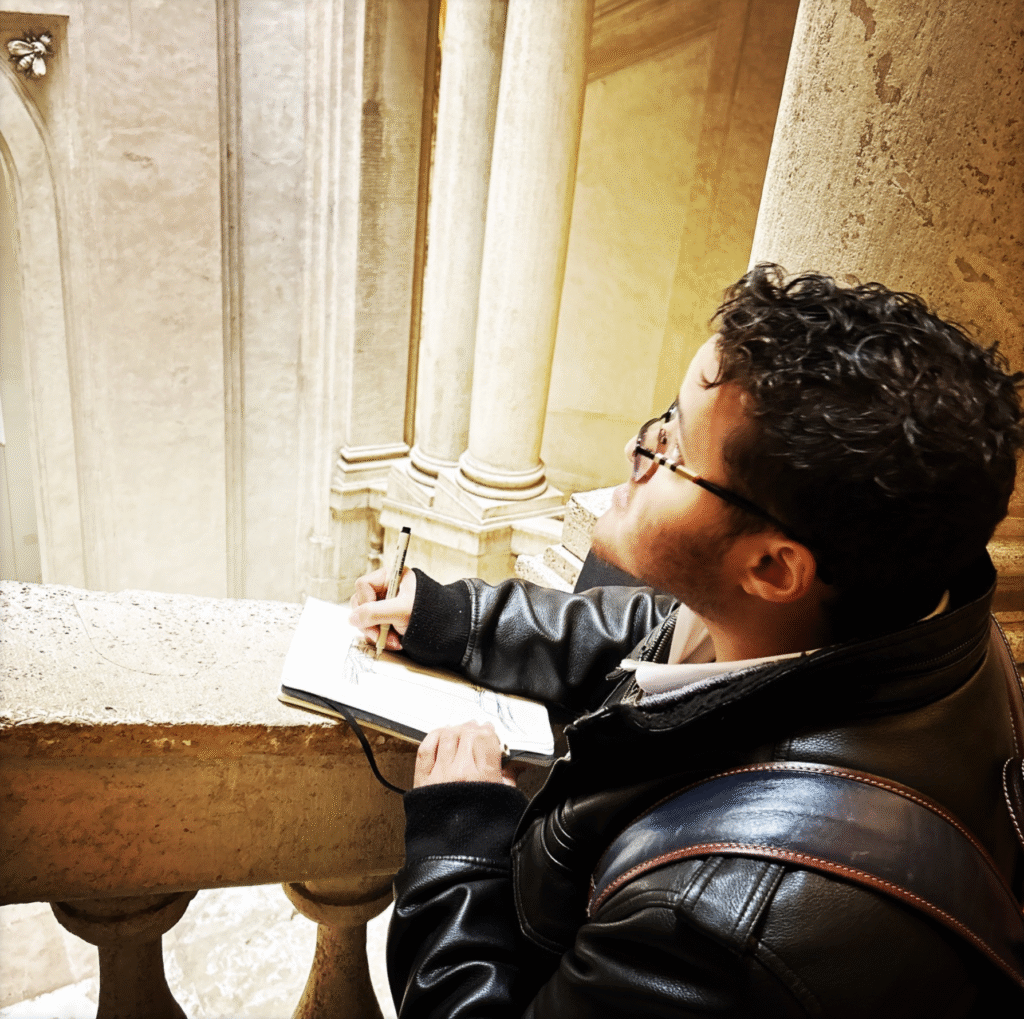
Jeremy onsite sketching in Palazzo Barberini for Analysis Class.
From Top Left: Cartographic Walk through Rome, Site Visit to the Colosseo Quadrato, Site visit to Ostia Antica; Site Visit to Villa Adriana, Academic Field Trip to Verona, Academic Field Trip to Pompeii; Academic Field Trip to Firenze, Academic Field Trip to Venezia. All photos are from the Spring 2025 semester.
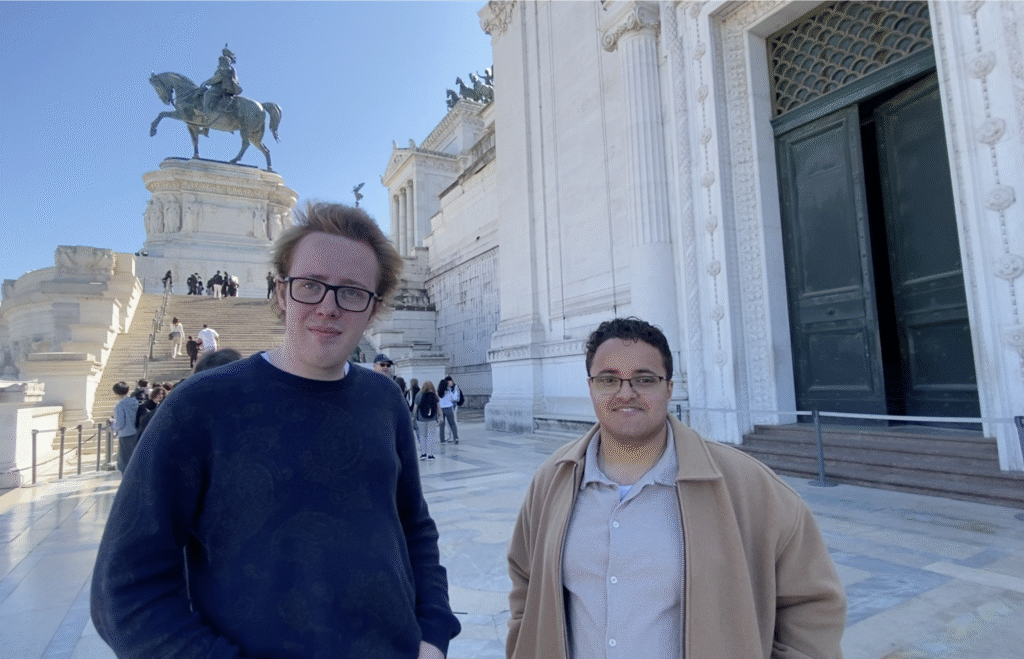
Thank you to Jeremy and Isaac for sharing your experience with us! We loved having you here with us this Spring and we have no doubt your careers are just beginning. We hope you enjoyed your time under the Roman sun! See you next time!
